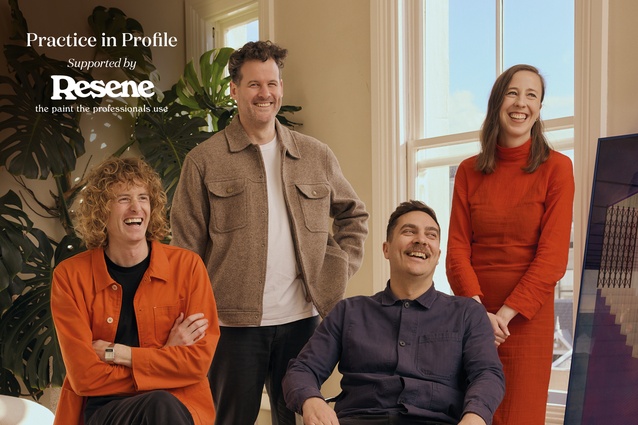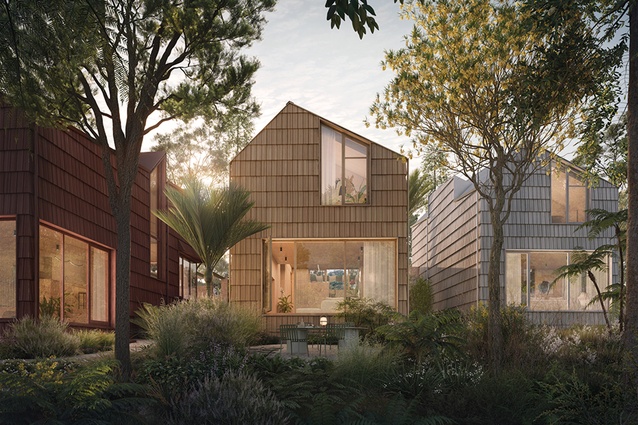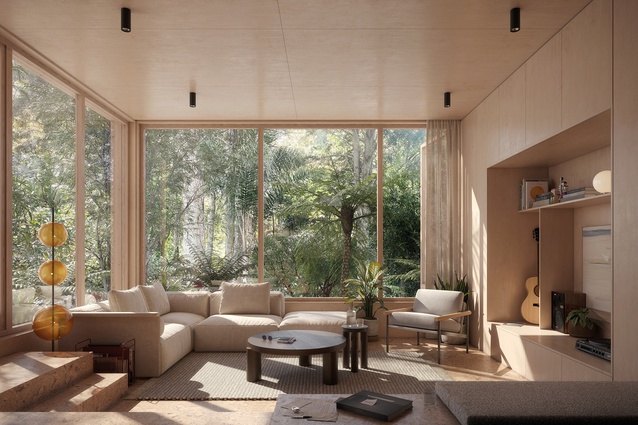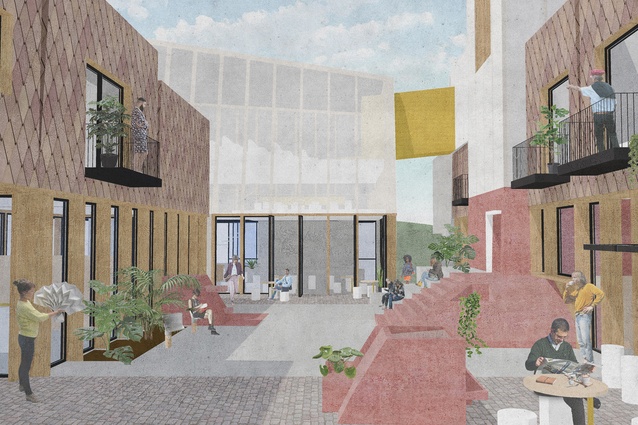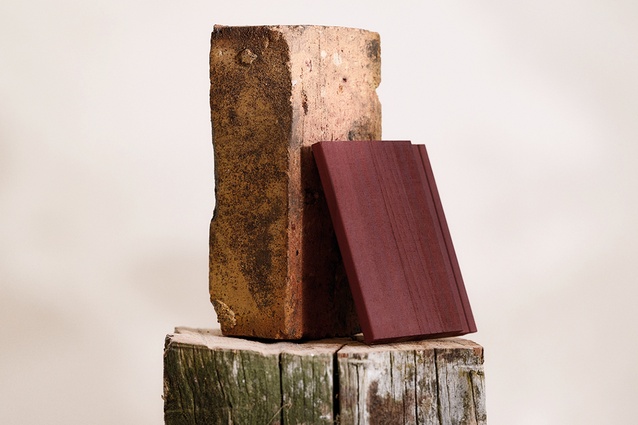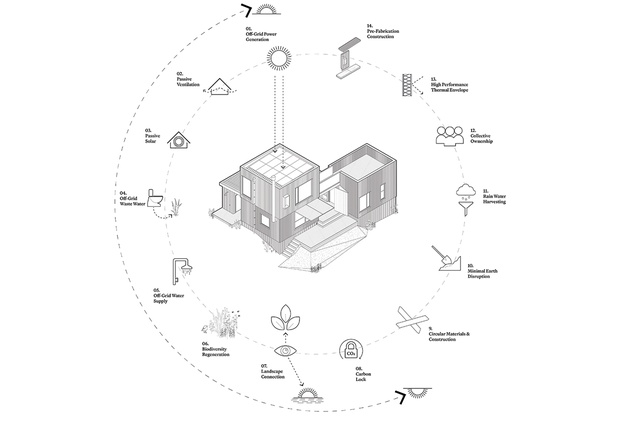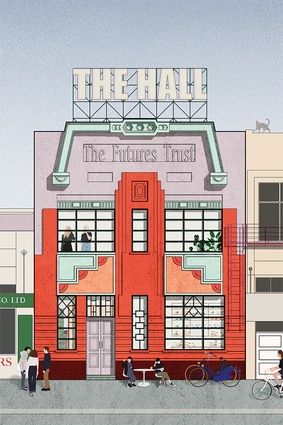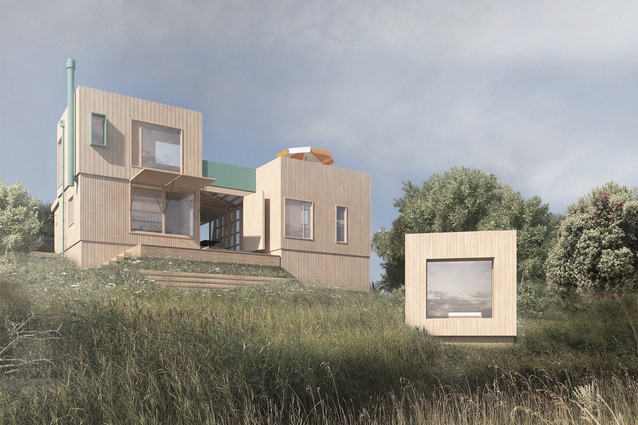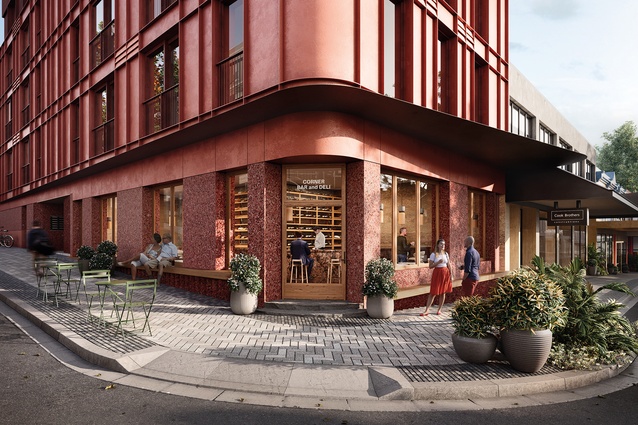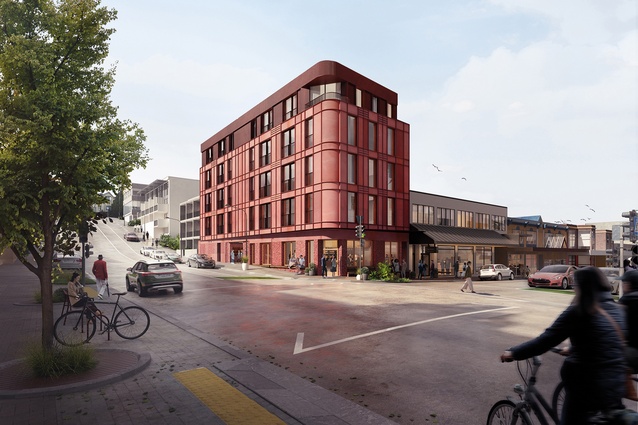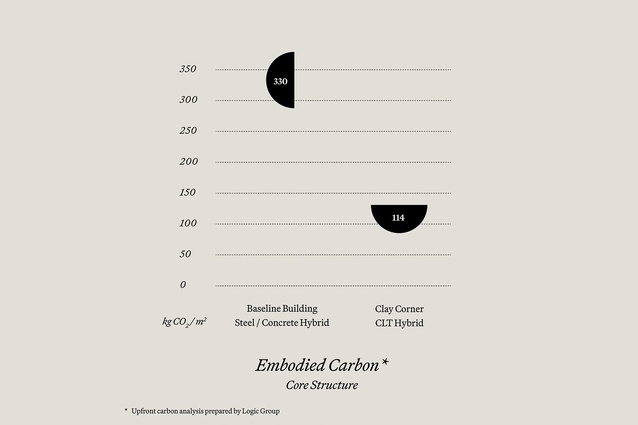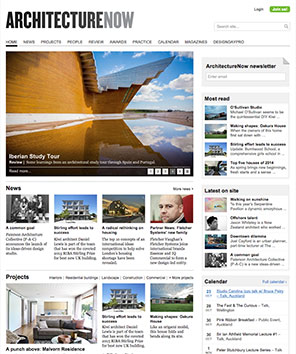Radical responsibility
ahha, a socially responsible architecture practice, discusses its aims and aspirations. The newly formed collective advocates optimism and enthusiasm tempered with holistic criticism and accountability, working within an evidence-based framework that prioritises sustainable and impactful initiatives.
Before ahha became a practice, what drew us together was a strong sense of a shared moral compass and, we’re sure, similar to many others in the small architecture community, an ability to have a lot of fun. The gravitational nexus was in Tāmaki Makaurau, where we all crossed paths studying and working together. Between us, we had studied at Unitec, University of Auckland, Victoria University of Wellington, Otago Polytechnic and Ara Institute of Canterbury, so we drew on an educational journey that crossed the motu. Similarly, our work experiences crossed small and larger practices, with work on diverse typologies up and down Aotearoa. In this time of study and early industry work, there is much time to share thoughts on the city or the countryside, workers’ rights, business management, beauty and functionality, theory and practice. There is a lot of dialogue, often with a drink, always with a lot of fun at industry events, on work trips, and at Coco’s Cantina. If someone could capture a picture of it in a drawing, it would be Cedric Price and it would resemble a Fun Palace. No distinct singular form but, instead, a collection of social activity that chooses to engage in cultural expression, political debate and democratic exchange, always with a focus on people and our relationship with the time and space in which we exist. It is a time of unhinged optimism — some might describe it as naïve.
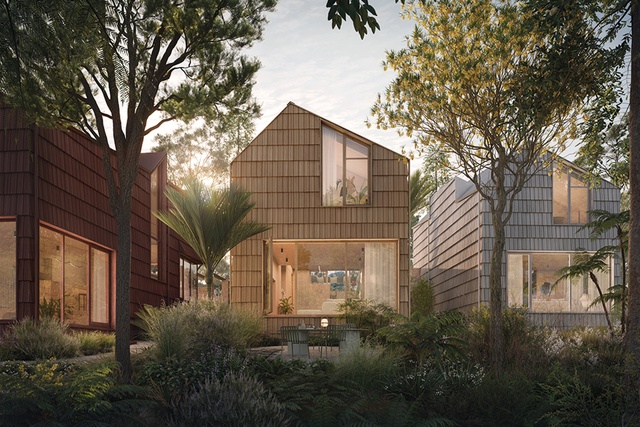
Leaving and returning
Like many other fortunate young professionals, we went overseas around the same time to feed that hunger for knowledge and experience. Again, we were all in different places, had other work, and had different learnings, but we all came together to share in the fun and exchange dialogue, further filling the optimism cup. These experiences exposed us to more collaborative practices than we had seen at home — not just in their working methods but in their structures and governance. Also, we observed markets that were more encouraging of innovation, where public institutions would invite progressive property procurement through alternative forms of ownership, financing and sharing, or markets that encouraged newly formed small practices to work on large architectural commissions, either wholly or with peer support. Again, work was diverse, some being landscape and public realm design, some temporary, some working in academia, most in practice, and spread all over Europe and America. The usual experiences of dense, walkable cities were everywhere. Similarly, there was a scale of work that would be less available while working at home, with some projects spanning many neighbourhoods and decades, leaving discrete opportunities to contribute within larger teams.
In a couple of our get-togethers, the notion of starting a practice was seeded and proliferated, with Jimmi O’Toole, Tony Calder, Melissa Harrison, Raphaela Rose and Campbell McNeill forming the group. Another round of optimism for bringing some of these ideas home led to some lofty goal-setting, such as a ridiculous suggestion of aiming for 500 homes to be built within five years…. We haven’t made that goal but it sets the tone for our ambitions. Our first projects were entries to competitions in New Zealand while we were still based overseas.
The first was Eke Panuku’s C40 Reinventing Cities competition for Henderson. Our proposal included 150 mixed-tenure residential units across two sites, connected with the natural landscape and the Waihorotiu and Oratia Streams, with a mixed-use ground condition activating a broader cycling and walking green infrastructure.
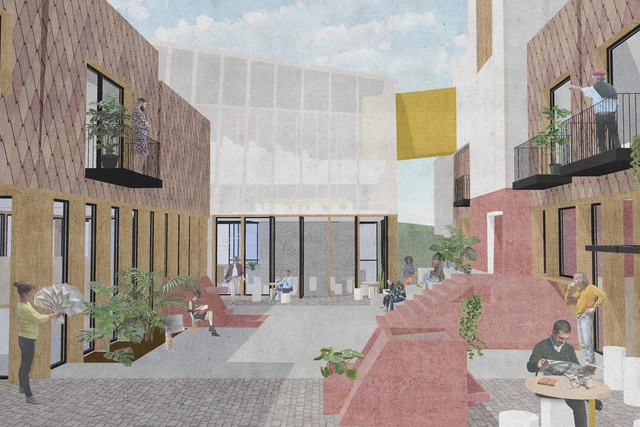
The second was Collett’s Corner in Lyttelton; an equally ambitious community-led project, our proposal focused on provisioning a rich mixture of functions where architecture activated a social interaction through spatial and time-based planning. We were short-listed as finalists on these projects and, while we didn’t take the projects further, they validated our stance on not shying away from our ambitions.
Everything in focus

Most of us returned to Aotearoa, some moving North and some to the South, while Melissa stayed in Europe to complete her PhD on the Urban Commons. We wanted to do everything when we started: manufacture and sell furniture products, build a building, write a newspaper, start a web-based incubator for cohousing and its participants, be an agency for built environment start-ups, design zero-energy houses, be developers, be teachers, be artists, be advocates for policy reform, plant trees… the list goes on. Thankfully, we received a grant for business advice so we worked with social enterprise consultants Ākina to produce an impact business model. Outlining a vision of a future we wanted to create enabled us to set outcomes, targets and indicators of success, and to know how to achieve them. This exercise brought all this raw ambition into focus by defining ways we could work around the purpose of creating a truly regenerative Aotearoa, striving to do better business and better architecture while targeting a market and establishing a pathway to where we want ahha to be.
Disciplined optimism
One critical development from the business coaching we undertook was the creation of our Impact Framework. A guide for and a measure of how each project we work on, regardless of scale or typology, can achieve an outcome that connects to our business purpose. The Framework enables a first-principles approach to a project-specific and holistic understanding of sustainability, which relies on evidence rather than on third-party certification. As with all projects, the tool to capture potential is in a well-defined brief; similarly, using the Framework at this early stage enables distillation of optimism and plays a crucial educational role in ascertaining how a client or stakeholder group’s project has a broader impact — negative or positive. In this way, it allows us to be more disciplined about optimism rather than doing everything, all at once. It helps to prioritise the most impactful initiatives for the time and place, both in business and on projects, avoiding the result of diluting efforts.
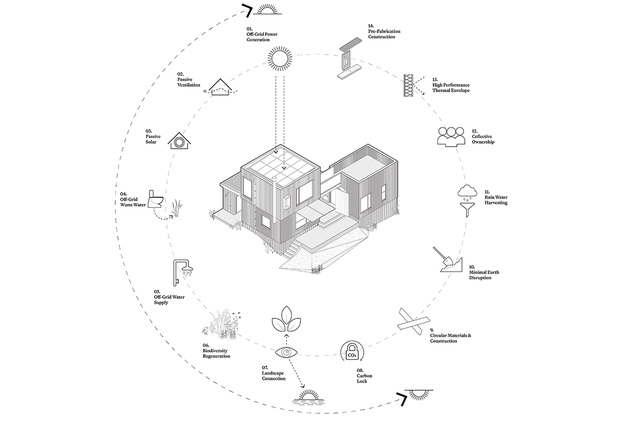
The Framework is not only a tool that allows us to articulate the impact of our projects to our clients but a method by which we hold ourselves accountable, enabling us to demonstrate complete transparency in our claims. This is born out of a concern that true progress is being stifled by social-washing, green-washing and culture-washing. We see regular examples of suppliers, consultants and industry awards making claims of projects that either entirely misrepresent sustainability or focus on a single aspect of it; for example, there is a focus only on operational carbon performance but not on upfront carbon, or there is a high-end, oversized, single-unit house that is used for only one month a year but achieves carbon neutrality via carbon credit offsets.
As a counterpoint at ahha, we establish baseline indicators from which we measure our project targets across the six domains within our Framework — Carbon, Ecology, Circularity, Equity & Access, Health & Well-being and Community & Culture. An example of this is a two-bedroom family home in Matakana we are currently designing. It has a life-cycle carbon footprint of –9kgC02eq/m2, a 101.8 per cent reduction in carbon when compared to a baseline New Zealand home and 70kgC02eq/ m2 below the life-cycle carbon budget set out by BRANZ, a target aligned to the Paris Agreement, which restricts global warming to 1.5°C.
In addition, we are enabling self-sufficiency, bringing down operational costs through onsite rainwater harvesting, black-water treatment and energy production. The site will be regenerated with native bush-enhancing ecosystems; it prioritises local, bio-based and red-list-free materials to operate within circular systems, as well as considering universal access. Being holistically critical and holding ourselves accountable forces us to innovate to meet these targets; this is crucial if we are to create any positive impact within the built environment.
While we are utilising our Framework and evidencing its benefits on all our projects, in some cases, working within the confines of the ways in which architecture is traditionally procured presents constraints to finding true impact in our work. We see architecture not only as built but also as ideas, research, dialogue or process. Through this lens, architecture can affect all aspects of society with opportunities to drive better outcomes everywhere.
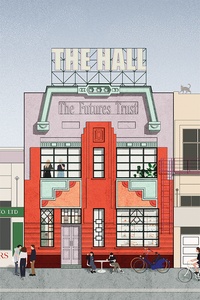
One example is a venture that established the Ōtepoti Futures Trust, a charitable trust that holds and redevelops land for the benefit of Dunedin citizens. While the offshoot of this organisation is a building project, the organisational design is based on research into structures of alternative property development for community benefit, both locally and internationally, and is aligned with place-based needs. The first project results in ahha as a designer and as the client, organising community and stakeholder input, planning development funding and process, engaging contractors, and considering operational management and leasing of the resulting structure. As it grows into a market influence, this organisation will begin to show the way to achieve equity in the built environment. It is examples of work like this where we believe architects have the power to make a positive impact by being disruptive while remaining disciplined and caring.
Plural vs singular
In both business and our work, there is an emphasis on collectivity for ahha. For us, the ways in which we communicate our company to the world is important. In choosing the name ‘ahha’, we sought to move away from an emphasis on the individuals who own and operate the practice, departing from the typical singular creative genius, which is so often the perceived role that architects hold. Our internal design process is highly engaged, utilising digital platforms to connect across spatial boundaries, allowing us to collaborate in all project stages. Externally, we employ participatory processes with both clients and community groups, to ensure we are working towards the needs of those the architecture is serving.
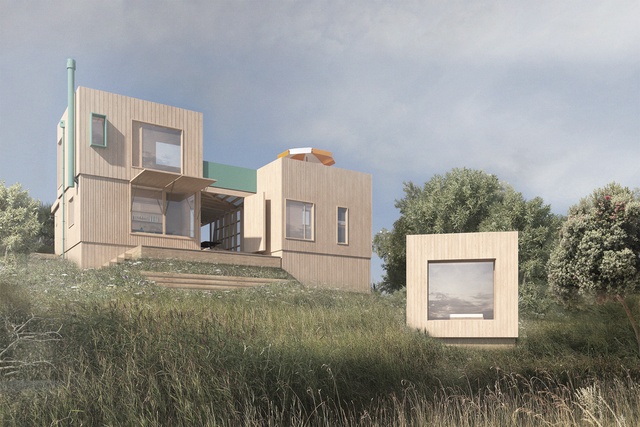
Similarly, we seek out work that encourages connection and enhances community, to ensure architecture is not only for the wealthy few. This means we look to procure singular architecture projects that can be more widely accessed by the collective through public realm projects, or we work on multi-unit housing to bring an economy of scale to a project, providing a quality of architecture for the many.
Sharing and learning
We are constantly searching for more hope and confidence about the future during this time of economic, social, cultural and environmental precarity. Our practice looks to share with peers and engage with the next generation of thinkers who will need to adapt to a rapidly changing idea of practice.
At Otago Polytechnic School of Architecture, we have been exploring the importance of urban visions for community engagement in climate-adaptation planning. Working in parallel with local teams involved with South Dunedin Future, students have proposed ideas for a staged adaptation of six neighbourhoods over a time line spanning 100 years. A project like this represents all there is to say about optimism and an architecture of caring. This collective idea of practice has become an essential part of the way we work, constantly looking for collaborations to realise the fun palaces of today. For us, working towards a regenerative future for Aotearoa is an everyday practice: a journey we hope others will join in on.

ahha is a team of values-led designers, makers and facilitators on a mission to transform the impact of our built environments radically through a bold new approach to designing and building spaces. As a social enterprise and multidisciplinary practice, the team works alongside clients, communities and iwi to undertake projects of various forms and sizes across architecture, design, education, experimentation and art. ahha.co.nz @ahha.architects

